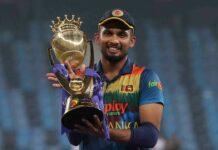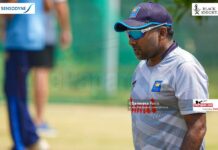“The same moment that you are seen as the best, the fastest and somebody that cannot be touched, you are enormously fragile” – Ayrton Senna
His title defence in the 1989 Championship began with three consecutive victories at Monaco, San Marino and Mexico early in the season. But technical problems halted Senna in the next four races, three of which he was leading. And despite three more wins in Germany, Belgium and Spain, the pendulum was swinging in Prost’s favour. In the penultimate race at Suzuka, Senna needed to win to remain contentious for the title. Prost had managed to leave the grid faster than Senna by removing the gurney flap from his car, which was unbeknownst to Senna. This reduction in down-force made Prost’s car faster on the straights, but slower through corners making it harder for Senna to pass on a circuit already difficult to overtake. The controversial collision between the two McLarens occurred in the 46th lap when Prost turned right into the upcoming corner and cutting Senna off, entwining wheels with him. Prost immediately abandoned the race but Senna urged for a push start and finally emerged victorious at completion. But much to the fury of the Brazilian, he was eventually disqualified for the push start, cutting the chicane after the collision with Prost, and for crossing into the pit lane entry which was not part of the track, leaving Alain Prost with the world title. Despite his loss, Senna maintained percentage of a 100% front row starts throughout the season. He also achieved the feat of most wins (5) by leading throughout a GP in a season, while the 1989 United States GP and the Australian GP marked most consecutive pole positions (8) and most consecutive front row starts (24), records which are yet to be broken.
Disappointment and bitterness created by the controversy in the previous year made him much stronger as the 1990 and 1991 seasons were stamped with Ayrton Senna’s supremacy in the F1 arena. Prost, the other protagonist of the ongoing enmity, competed with Ferrari. The season of 1990 began with Senna’s triumph at United States which was followed with wins at Monaco, Canada, Germany, Belgium and Italy. Monaco GP once again unveiled Senna’s authority as he seized the pole position, fastest lap and the victory.
When the duo arrived at Suzuka, Senna took the pole position but his spleen was nipped once again, as he was disallowed to start from the cleaner left-hand side of the track. The initial agreement with the stewards to move it to the cleaner side was revoked by the fractious FIA, leaving Senna infuriated in unfavourable conditions. During the race, the cars collided once again when Prost attempted to turn in at the first corner, spinning both cars out of track, this time leaving Senna as the champion. He wrapped up the season with 78 points in the final standings, with 6 wins and 10 pole positions.
He proclaimed his supremacy in the following season, as he won the first four races including the pole positions and later three more. Once more, the Japanese GP became the critical point as a win was required for Nigel Mansell to keep his hopes alive for the championship. But after Mansell retired following a spin off at lap 10, Senna who already knew that the 1991 title was a certainty, gifted the victory to his team-mate Gerhard Berger at the last corner, as gratitude for his support throughout the season. Senna finished with 96 points, 24 ahead of Nigel Mansell. It was the 3rd time in a season Senna had triumphed in 5 races by leading throughout a GP, taking his record tally to 19, which was indeed relentless domination for a driver. Not only had his lifelong dream of winning at Brazil become a reality, but he had already acquired himself as the youngest triple F1 champion.
Nigel Mansell and Williams FW14B dominated the 1992 season but Senna ruled at his fortress in Monaco, perhaps the most challenging circuit of all. When Alain Prost and Williams won the 1993 Championship, Ayrton Senna finished second with 5 wins, namely at Interlagos, Donington, Monaco, Suzuka and Adelaide. At his stronghold in Monte Carlo, Ayrton Senna recorded his 5th consecutive victory, most by any driver at a single GP.
One of his finest drives was the ‘Lap of the Century’ at Donington Park when he exploited torrential conditions to overtake five drivers in the first lap to take the lead. Having dropped to 6th at the start, once again Senna had to combine his knack for the feel of the machinery with the conditions to produce an opening lap that became the stuff of legend, once again assuring his place as one of the best drivers in extreme weather.
The 1993 Australian GP was his 41st conquest and the last time the racing world saw Senna and Prost on the same podium. At the race concert in Adelaide, singer Tina Turner dedicated her hit ‘Simply the Best’ as a tribute to Ayrton Senna, a fitting tribute for the peerless sportsman.
Senna was known as one of the most mystique and compelling personalities in the driving seat. His powerful physical appearance and magnetic appeal astonished everyone. As a devout Catholic, he once said “Just because I believe in God, just because I have faith in God, it doesn’t mean that I’m immune. It doesn’t mean that I’m immortal”. Everyone commended at how he put his very soul, not just into his driving but into life itself. A little was known that Senna had quietly donated millions of his personal fortune (estimated 400 million dollars) to help the underprivileged. The framework later became the ‘Institute Ayrton Senna’. He affirmed that “Wealthy people can’t live in an island that is encircled by poverty. We all breathe the same air. We must give a chance to everyone, at least a basic chance, at least an opportunity to get education, food and medical care”. His off track influence illuminated and brought positivity to a nation which had a little. That itself meant he was a national treasure.
After a glorious run with McLaren, Senna moved to Williams in 1994. Rules were altered as traction control, ABS and active suspension was banned for cars. Despite not being able to finish the first two races, Senna entered San Marino, achieving his record 8th and his 65th career pole position. However the qualifiers were crippled when Rubens Barrichello and Roland Ratzenberger suffered injuries in heavy crashes. Barrichello survived with injuries but Ratzenberger’s crash proved fatal. Although he was eyeing his 4th consecutive win at Imola, disturbed by the events, a tearful Senna took the initiative to form the Grand Prix Drivers Association to ensure safety for the drivers. In the aftermath of the two accidents, when questioned about his safety, Senna responded “There are often things over which we have no control. I cannot quit. I have to go on. The day it arrives, it will arrive; it could be today or 50 years later. The only sure thing is it will arrive”
And so it did on the following day, May 1st 1994 when his race-leading Williams inexplicably slipped off the track and hit the concrete wall at Tamburello corner as Senna’s sublime career was cut short in tragic circumstances.
He often believed that, “If I ever happen to have an accident that eventually costs me my life, I hope it is in one go. I would not like to be in a wheelchair. I would not like to be in a hospital suffering from whatever injury it was. If I’m going to live, I want to live fully, very intensely, because I am an intense person. It would ruin my life if I had to live partially”.
It was indeed instant and when Senna was pulled from his wreckage, alongside him in his cockpit was an unfurled Austrian flag he planned to wave when he crossed the line in tribute to Ratzenberger, whose death had made him seriously consider his own mortality.
Over 3 million people who mourned his death flocked to Sao Paulo for his state funeral, possibly the highest number for a sporting personality. Among the mourners were Alain Prost, his longtime rival who escorted the coffin and Frank Williams, who stated that Senna was “a greater man out of the car than in it”. Few months later, the victorious Brazilian football team dedicated their World Cup to the three-time world champion and so did Michael Schumacher, the ultimate winner at Imola and the 1994 Drivers’ Champion.
Many safety improvements were made following the darkest weekend in F1 history to enhance the protection of drivers. Twenty years may have passed since the demise of arguably the most vying and influential driver ever to grace the sport, but the luminary ‘Ayrton Senna’ will live on.























